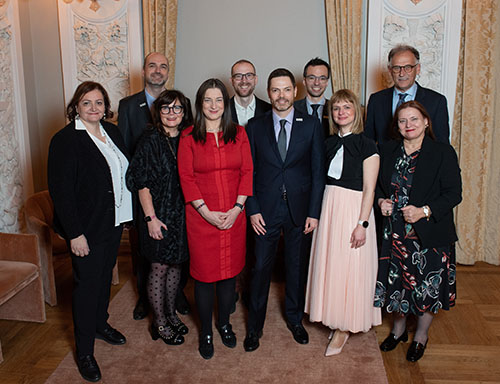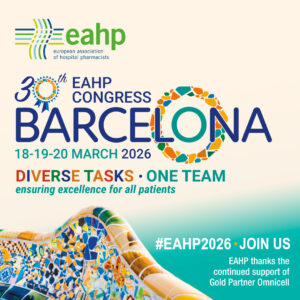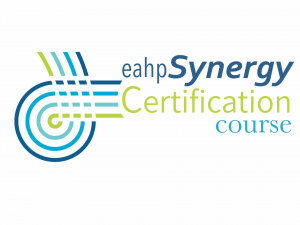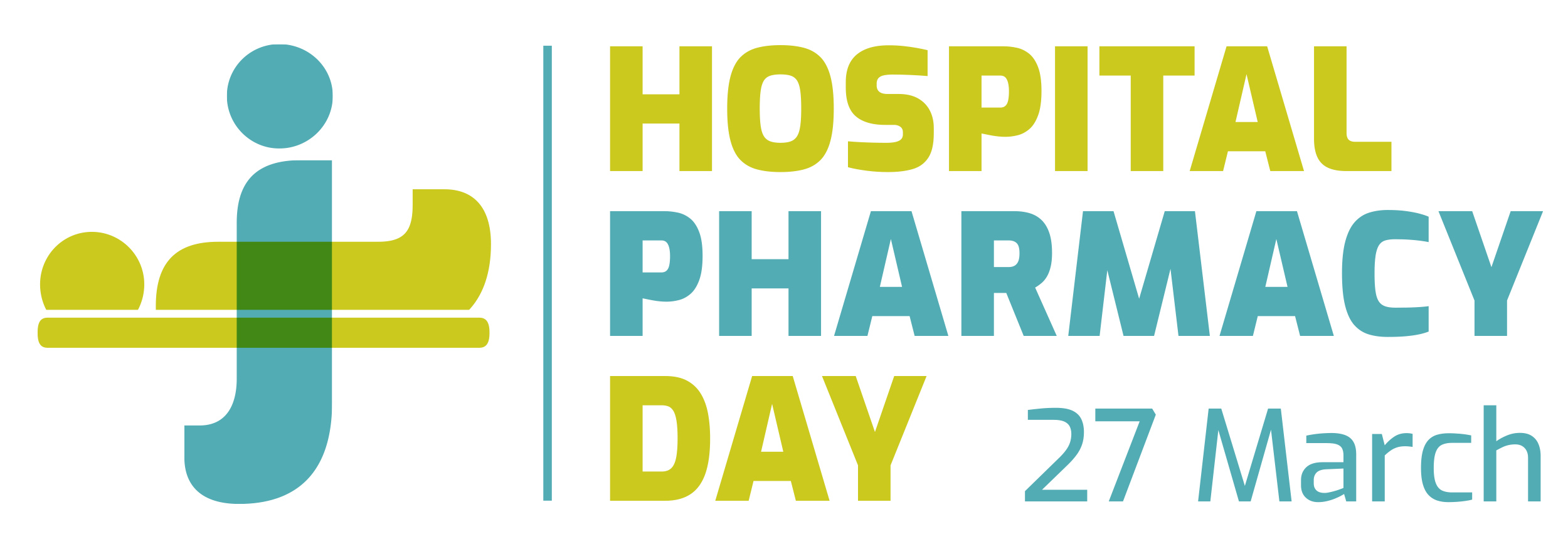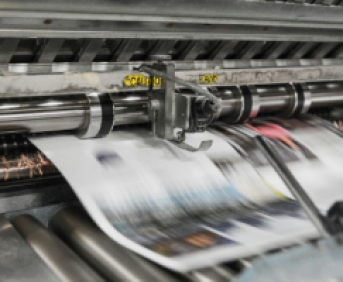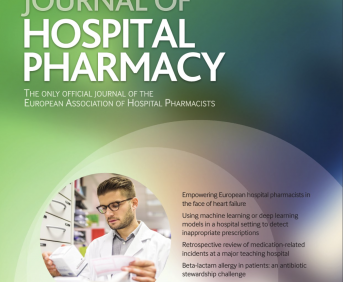PHARMACEUTICAL INTERVENTIONS IN PARENTERAL NUTRITION: METHODOLOGY AND RESULTS (submitted in 2019)
Pdf

European Statement
Clinical Pharmacy Services
Author(s)
Teresa Cabeças, Sara Franco, Rita Oliveira, Maria Pereira
Why was it done?
PN is an alternative or complement in patients whose oral and/or enteral nutritional intake is inadequate/unsafe or whenever the digestive tract is not functioning or this route is contraindicated. Success in choosing the most appropriate PN depends on a specialised multidisciplinary team that can provide nutritional support that results in improved clinical outcomes and patient safety. With the decision flowchart (designed in January 2019), the hospital clinical pharmacist intervenes in the calculation of the patient’s nutritional needs and, consequently, in the counselling of the most appropriate PN bag and clinical and biochemical monitoring of the patient.
What was done?
Definition and implementation of action methodology, in a form of flow chart, for patients in need of parenteral nutrition (PN).
How was it done?
Implementation of the following therapeutic decision methodology: 1. Validation of parenteral support nutritional option according to decision flowchart; 2. Filling out a patient’s nutritional needs spreadsheet −anthropometric assessment; biochemical data; calculation of protein requirements; calculation of non-protein energy needs; calculation of total energy requirements; choosing the appropriate volume; validation of the route of administration; 3. Selection of the most suitable PN bag from the Hospital Formulary (preferably after ionic corrections); 4. PN bag suggestion to the prescribing physician; 5. Acceptance and alteration (or not) by the prescribing physician; 6. Clinical and biochemical monitoring of the patient; 7. Optimisation of nutritional therapy when applicable.
What has been achieved?
From January to August 2019 the Pharmaceutical Services intervened in all 21 PN prescriptions. In this universe, 15 were in the context of gastroenterology surgery, 5 due to infection and 1 due to non-gastrointestinal cancer disease. The intervention was not accepted in only 5 cases.
What next?
Clinical pharmacists play a key role in supporting the prescription of PN. The future is challenging, particularly in assessing patients’ outcomes and quality of life, as well as the economic and financial dimension. It will also be essential to create a Clinical Nutrition Commission that covers PN, enteral and oral feeding.
IMPLEMENTATION OF AN ASSISTED ELECTRONIC PRESCRIPTION SYSTEM IN A CRITICAL CARE UNIT (submitted in 2019)
Pdf

European Statement
Clinical Pharmacy Services
Author(s)
MARTA VALERA-RUBIO, ROSARIO MORA-SANTIAGO, MARIA ISABEL SIERRA-TORRES, JOSE LUIS ORTIZ-LATORRE, ISABEL MOYA-CARMONA
Why was it done?
The existence of different prescription systems could lead to validation errors when the pharmacist responsible for the ICU is not available. Furthermore, ICU physicians could not benefit from all the advantages that the official prescription system included. The presence of a common integrated prescription system among all units allow the exchange of prescription drug information between the ICU and the rest of the units, in accord with the health situation of the patient. Moreover, with this new system they can have access to allergies, renal adjustment doses, recommended posologies, therapeutic exchanges, and pharmacy validation, among other items.
Moreover, with this new system they can have access to allergies, renal adjustment doses, recommended posologies, therapeutic exchanges, and pharmacy validation, among other items.
What was done?
The intensive care unit (ICU) used a computerised physician order entry system different from all the hospital units. The pharmacy service, along with the ICU physicians and nurses, have tried to adapt the special features of this unit to integrate it with the clinical decision prescription system that is official in the hospital.
How was it done?
A multidisciplinary team formed by ICU staff (doctors and nurses) and pharmacists met to discuss the points that should be followed when implementing the new electronic prescription programme. In these working meetings, especially with physicians, we tried to agree on what and how the infusion protocols would be included in the new system, based on the infusion pumps guides made by both units. A pilot phase was established by the end of July 2019 to detect possible errors in the process of prescription, and mostly, when a patient changed from two units, from the ICU to another health care service and vice versa. All errors or discordances found were discussed between the pharmacist and the physician or the nurse, and in order to solve them we contacted the managers of the prescription system or we modified the parameters that are included in the system such as names of drugs, dosage guidelines, new nurses’ orders, etc.
What has been achieved?
The implementation of this new system has been well embraced by the staff, since it allowed a more efficient and secure health care circuit for the patients. All physicians are now able to use this system while the other one is no longer used.
What next?
We will continue making formative sessions with both physicians and nurses, in order to solve all the doubts that can appear during the training period. We will update periodically the available data and make improvements in the programme configuration.
DESIGN AND ELABORATION OF AN INTELLIGENT INTRAVENOUS INFUSION PUMPS GUIDE FOR THE INTENSIVE CARE UNIT (submitted in 2019)
Pdf

European Statement
Clinical Pharmacy Services
Author(s)
MARTA VALERA-RUBIO, MARIA ISABEL SIERRA-TORRES, ELENA SÁNCHEZ-YAÑEZ, JOSE LUIS ORTIZ-LATORRE, ISABEL MOYA-CARMONA
Why was it done?
Critically ill patients often require the administration of several intravenous drugs and that includes infusion pumps. New infusion pumps offer the ability to build a drug library within the infusion system itself. This allows intravenous infusion medication safety to be improved. Because of that, it is highly important to have an updated administration guide and an IV smarts pumps library for the everyday clinical practice. This guide was developed in order to help ICU staff to practice safe prescribing and managing of medicines and to reduce the incidence of adverse drug events and administration errors.
What was done?
We developed an updated guide on intravenous drug administration including infusion parameters for intelligent intravenous infusion pumps, so called “IV smarts pumps”, used in the intensive care unit (ICU).
How was it done?
A database with the most important intravenous drugs used was created by a multidisciplinary working team (pharmacists, physicians and nurses). The drugs included were divided into therapeutic groups and were distributed among the participating members for the drug information review process. The therapeutics groups included were: sedatives, analgesics, antihypertensives, vasopressors, anti-arrhythmics and others such as insulin, heparin, etc. For each drug, a bibliographic research was conducted, gathering information from manufacturers, intravenous drugs databases (Uptodate®, Micromedex®, Stabilis®) and other hospital guidelines. The data collected included: drug name, lower and upper hard limit, default dilution, flow rate, default rate, rate upper soft and hard limit, bolus default, flow rate and volume upper limit, loading dose, duration, dilution volume, default, and lower and upper hard limit.
What has been achieved?
This guideline promotes, mainly, the safe use of drugs usually administered in critically ill patients, and is available for all the staff in this unit. Its elaboration has made it possible to avoid medication errors and to establish a narrower bound between the pharmacy service and the critical care unit, developing new partnerships which could lead to new projects.
What next?
We are still working on improving this guide, making it easier to understand and with a unified vocabulary. We will update it periodically in order to include new evidence and new drugs if necessary.
DEVELOPMENT OF GUIDELINES FOR SAFE HANDLING OF ONCOLYTIC VIRUSES (submitted in 2019)
Pdf

European Statement
Clinical Pharmacy Services
Author(s)
Faten Ahmad Díaz, Eugenia Serramontmany Morante, Carla Esteban Sánchez, Pablo Latorre García, Montserrat Carreres-Prieto, Javier Martínez Casanova
Why was it done?
Different critical points were detected: 1) some OV dose prescription depends on tumor size, 2) special storage conditions, 3) special safety measures related to preparation to prevent cross-contamination and technician exposure, 4) special transport conditions in a safety container, and 5) safe administration. The increasing number of clinical trials with OV combined with the identified critical points implies a better coordination between the different departments involved.
What was done?
Development of a standardised working procedure for the safe handling considerations, storage requirements, and modes of administration of oncolytic viruses (OV) in patients with cancer.
How was it done?
Different meetings were arranged with a multidisciplinary team to standardise procedures, in order to avoid errors: 1. The pharmacist validates the prescription volume reflected on the certified sheet according to the tumour size. Then, a pharmacy technician is authorised to remove the vials from the freezer to start the preparation. 2. Special −80ºC freezer is needed to preserve the OV. 3. According to the preventive medicine service, OV must be prepared in biological safety cabinet class II (BSC) with personal protective equipment. At the end of preparation, the BSC must be cleaned with the OV appropriate disinfectant and ventilated for 1 hour before restarting to work again. So, the OV preparation was established at 7 a.m. in order to avoid cross-contamination with the chemotherapy (first preparation in the day). 4. Safety transport must be considered, so OV is packaged in a special hermetic box. 5. The majority of the OV preparations are administered intralesionally at the radiology room so safe administration is needed to avoid the room contamination.
What has been achieved?
By using these procedures, it is possible to work with a single BSC, avoiding delays in the administration of other therapies while reducing the risk of mistakes.
What next?
These types of therapies represent a novel therapeutic modality: their preparation, administration and handling requirements differ from current therapies; pharmacists have an important role in developing new procedures to incorporate them into clinical practice. This protocol may be useful to other centres due to the lack of experience and standardised guidelines to work with this type of therapy.
DESIGN OF AN ANTI-HAEMORRHAGIC AGENTS PROTOCOL FOR AN INTENSIVE CARE UNIT (submitted in 2019)
Pdf

European Statement
Clinical Pharmacy Services
Author(s)
Mercedes Gómez-Delgado, Marta Valera-Rubio, Margarita Carballo-Ruiz, José Luis Ortiz-Latorre, Isabel Moya-Carmona
Why was it done?
Blood coagulation factors and their adequate use can be of particular importance in the treatment of massive haemorrhage, especially in the ICU. This initiative was taken in order to improve uptake and to avoid errors in the administration, which can be difficult in emergency situations.
What was done?
To define an emergency procedure that ensures correct management in cases of massive bleeding in an intensive care unit (ICU).
How was it done?
The development of drug use protocols for emergency situations is a simple task that facilitates health workers to manage them. Prioritising the drugs to be included in a protocol by a previous survey in a multidisciplinary setting is important to consider the different points of view. We carried out a review of the pharmacy service to the ICU needs of antihaemorrhagic drugs. ICU staff (doctors and nurses) were informed to reach an agreement about eligible drugs for being included in the protocol. ICU staff requested the inclusion of four drugs in the protocol according to the prevalence of use and the difficulty of administration: human fibrinogen, tranexamic acid, eptacog alfa and human prothrombin complex. We created a protocol with four information sheets, one of each drug, made of schematic information about: 1. Physical location (fridge or room temperature, number of shelf) and minimum safety stock (3 units of human fibrinogen, 4 units of tranexamic acid and 3 units of human prothrombin complex). 2. Indications and dosage according to the clinical situation and the patient characteristics (dosage adjustment according to renal or hepatic impairment, weight or age when applicable). 3. Recommendations for intravenous administration (flow rate, bolus, loading dose, dilution, mixture stability).
What has been achieved?
Mapping the information and dividing it into sections is essential for its rapid understanding in a high-stress work environment. The implementation of this protocol was well embraced by all the staff involved, since it allowed a more efficient health care circuit for the ICU staff. It also optimises the consumption of this type of more monitored drugs.
What next?
We will monitor the compliance with this protocol, as well as possible updates that may be beneficial for a better understanding of the forms of administration.
ROUTE TO CLINICAL PHARMACY: THE EXCHANGE PROGRAMME EXPERIENCE (submitted in 2019)
European Statement
Clinical Pharmacy Services
Author(s)
Chiara Inserra, Antonio Solinas, Chiara Panciroli, Branden Nemecek, David Zimmerman, J.Douglas Bricker, Piera Polidori
Why was it done?
Successful implementation of clinical pharmacy services are associated with improved prescribing practices. SIFO includes clinical pharmacy in their mission to line up with Section 4 of the European Statement on Hospital Pharmacy and is striving for implementation through advanced trainings for IHPs. The aim of this EP was to provide real world clinical pharmacy training to IHPs.
What was done?
Through international collaboration between Duquesne University School of Pharmacy in Pittsburgh (PA-USA) and the Italian Society of Hospital Pharmacy (SIFO) a clinical pharmacy exchange programme (EP) was established to provide clinical education to Italian pharmacists interested in advancing the profession. From 2010 to 2018, SIFO provided several grants to allow Italian hospital pharmacists (IHPs) to participate. In 2018, three IHPs from across Italy were selected for a 1 month experience to gain experience and insight into practices that they may use in their facilities.
How was it done?
The clinical training was created by Duquesne University to provide IHPs educational and first-hand clinical skills based on American clinical pharmacy practice and education. The training was individualised for IHPs’ interests including didactics and practical training. Sessions to discuss IHPs’ progress were conducted with the Dean and faculty of the programme.
What has been achieved?
IHPs had the chance to observe American pharmacy education and compare it to the Italian one. American university training was practical, well-coordinated with clinical activities, and based on a trustful teacher-student relationship. During practical training IHPs shadowed American Clinical Pharmacists (ACP) specialized in different areas: Infectious Disease, Cardiology, Oncology, Emergency Medicine, Internal Medicine, Community Pharmacy, Ambulatory Care. They were able to observe how ACPs validate prescriptions and are actively engaged in direct patient care, participating in bedside multidisciplinary rounds and making recommendations on therapies (drug interactions, dose adjustments, antibiotic selection). IHPs saw how technology investments, prioritisation of care, and availability of skilled personnel underlie American hospital pharmacy practice.
What next?
IHPs gained baseline clinical pharmacy skills to enhance care at their facilities; however, the widespread implementation of clinical pharmacy in Italy requires education reform, enhanced resources and integration of pharmacists within a multidisciplinary team. Implementation of small projects through collaboration with universities should be considered in the Italian hospital setting.
OPTIMISING WORKFLOW AND MEDICATION IN THE ACUTE WARD − BETTER USE OF PHARMACISTS’ SKILLS (submitted in 2019)
European Statement
Clinical Pharmacy Services
Author(s)
Mia P von Hallas, Trine RH Andersen
Why was it done?
Physicians in acute wards have limited time to see all patients. Time for medication history, reconciliation and review is limited, due to great patient turnover. The physicians did not consider the pharmacist medication review alone as a contribution to the workflow or to relieve the high workload.
What was done?
Through user surveys among the physicians in the Acute Ward, pharmacist tasks were adjusted to benefit the physician’s high work flow. Before the survey, pharmacists performed medication reviews which were communicated to the physician. The adjusted pharmacist tasks on the ward includes medication history, reconciliation and transfer of the medication to the electronic medicine module (Epic), securing up-to-date medicine data during hospitalisation.
How was it done?
A questionnaire was developed regarding four areas (Pharmacist competencies, Pharmacist tasks, Pharmacist medication review, Multidisciplinary teamwork) and distributed among the physicians. Based on the anonymous responses, the pharmacists adjusted their tasks to include medication history, medication reconciliation and transfer of medication to Epic, complying with the suggestions in the questionnaire survey. Obstacles were low percentage of respondents (15/33 (45%) prior to the initiative and 12/39 (31 %) after), and the large replacement of junior physicians in the period between surveys.
What has been achieved?
Pharmacists feel more part of the multidisciplinary team and attitudes towards the pharmacist service among physicians has changed. A new survey after implementation of the new workflow showed that 73% found medication reconciliation was a pharmacist task, compared to 29% before. After implementation, 90% of physicians believed that pharmacists could do medication review (67% before intervention). The acknowledgement that pharmacists were able to transfer medication to Epic was increased from 20% to 90%. The attitude has changed from considering pharmacists as medication advisers to considering pharmacists as part of the multidisciplinary team in the ward.
What next?
The questionnaire survey will be repeated annually to continually improve the workflow and contribution of clinical pharmacist services to the heathcare professional team in the acute ward.
BIOSIMILARS: LET’S START RUNNING (submitted in 2019)
Pdf

European Statement
Clinical Pharmacy Services
Author(s)
Beatriz Zurita Alonso, Marta Martí Navarro, Monica Estelrich, Alejandro Ballestero Corominas, Anna Badell Giralt, Diana Patricia Vera Rodríguez, Milagros Ricse Salcedo, Roxana Rubio Vargas
Why was it done?
The use of biosimilar drugs has been a breakthrough to improve the sustainability of the health system. Although since 2015 position papers have been published by some scientific societies, there is no clear consensus about the recommendation for a switch from the original drug to its biosimilar. The rate of biosimilar use in our country is one of the lowest in Europe.
What was done?
The pharmacy service led the creation of a working group formed by rheumatologists, gastroenterologists, dermatologists and pharmacists to promote the use of biosimilar drugs in our hospital.
How was it done?
The working group wrote a consensus document in which it was jointly decided to start all new biological treatments with biosimilars. In addition, it was decided that the prescribers would determine which patients were candidates for switch to a biosimilar based on clinical criteria. If the drug is administered subcutaneously, the pharmacist is responsible to explain the reason for the change and the management of the new device to the patient. In case of disagreement, the original is kept and communicated to the prescribing physician. If the drug is administered intravenously, it is the physician who informs the patient about the change.
What has been achieved?
From May 2019 to September 2019, 17 switches were made: 4 infliximab (66.7%), 9 adalimumab (10.1%) and 4 rituximab (80.0%). This measure led to an economic saving of €111,106.96 per year. Twenty new treatments with biosimilars were started: 1 with etanercept, 2 with infliximab, and 17 with adalimumab. This supposed an economic saving of €141,826.36/year if we compare with the cost of the original drug. The rate of antiTNF biosimilars increased from 33% to 48% in 5 months. None of the patients refused the use of a biosimilar. By now, all treatments maintain their effectiveness without safety issues. This optimisation of treatments will allow the hospital to treat a greater number of patients and invest in innovative treatments.
What next?
These results indicate a great opportunity to offer biological treatment to a higher number of patients every year. Therefore, our objective is to achieve the switch of remaining patients as it could generate an additional saving of €630,072.28 per year.
CAN THE CLINICAL PHARMACIST INCREASE HOSPITAL STAYS’ PRICING? (submitted in 2019)
Pdf

European Statement
Clinical Pharmacy Services
Author(s)
Thibault Stala, Niels Martignene, Céline Monchy, Anne-Laure Lefebvre, Geoffrey Strobbe, Ali Hammoudi, Frédéric Feutry, Malgorzata Cucchi, Guillaume Marliot
Why was it done?
In France, hospitalisations’ reimbursement is linked to care severity. In this context, health care must be as comprehensive as possible on the comorbidities’ registration. As part of prescription validation, the clinical pharmacist can easily highlight comorbidities associated with specific treatments, in order to improve their codification and consequently to better valorise hospital stays.
What was done?
This work involves evaluating the ability of the clinical pharmacist to detect comorbidities related to certain treatments.
How was it done?
Six comorbidities, associated with the prescription of specific therapies, were chosen: – Dyskalaemia (potassium or polystyrene sulfonate prescriptions); – Neuropathic pain (NP) or anxio-depressive disorder (ADP) (amitriptyline, anafranil, pregabalin, gabapentin, duloxetine or capsaicin prescriptions); – Iron deficiency anaemia (IDA) (injectable iron prescriptions); – Hypovolaemia (HV) (ringer Lactate, serum albumin or gelatin prescriptions); – Hypercalcaemia (HC) (bisphosphonate and/or calcitonin prescriptions); – Severe infection (Inf) (linezolid, daptomycin, teicoplanin, aztreonam and carbapenem prescriptions). Retrospectively, all stays ending between 01/01/2019 and 31/03/2019, and containing at least one prescription of the previously mentioned therapies, were considered. Then, the medical records were analysed to verify the presence of the comorbidity corresponding to the prescribed drug(s). The coding was checked, otherwise, the comorbidity was added. Finally, the revaluation of the stays’ cost has been estimated.
What has been achieved?
The number of stays by suspected comorbidity, based on prescribed treatments, is : – 175 dyskalaemia; – 231 NP or ADP; – 155 IDA; – 124 hypovolaemia; – 41 hypercalcaemia; – 16 severe infection hypovolaemia and severe infection were quickly set apart because of the difficulty to confirm these comorbidities with the only retrospective medical record information. No stay with IDA or hypercalcaemia has been revalorised. The price of a single stay with dyskalaemia has been increased, by €530. However, NP or ADP has increased the cost of 6 to 13 stays, resulting in a total revaluation of €6000 to €11,000.
What next?
The stays’ remuneration is the hospitals’ main source of income. This work makes it possible to quickly determine if the clinical pharmacist can bring added value in the field of hospital stays’ pricing. The next step is the transition to forward looking. It would also be possible to assess other comorbidities.
VANCOMYCIN CONTINUOUS INFUSION FOR PATIENTS ON ICU (submitted in 2019)
Pdf

European Statement
Clinical Pharmacy Services
Why was it done?
In the ICU there was a lot of misunderstanding around the administration of vancomycin by intermittent dosing, particularly around the timing of pre-dose vancomycin levels and appropriate dose adjustment. It could take several days for a patient to reach the therapeutic range of vancomycin.
What was done?
A protocol for the administration of vancomycin by continuous infusion was developed for patients on ICU, replacing the previous method of giving vancomycin by intermittent dosing; this was developed in consultation with the Anaesthetics and Microbiology Departments.
How was it done?
To develop a vancomycin continuous infusion dosing schedule for patients admitted to ICU, through a review of the available literature and with reference to vancomcyin continuous infusion protocols already established on ICUs in other hospitals. A proposal for administration of vancomycin continuous infusion needs to be included on the electronic clinical information system currently in use in the ICU. An IV drug monograph for vancomcyin by continuous infusion will be included in the ‘ Intravenous Medication Infusion Guidelines’; this will provide information on compatibility with other infusions if required. To recommend vancomycin continuous infusion in patients as agreed with the Anaesthetics and Microbiology Consultants at the daily ward review, this would require the patient to have a dedicated IV line.
What has been achieved?
A finalised version of the Vancomycin Continuous Infusion protocol has been developed in consultation with Anaesthetic and Microbiology Consultants. We have included additional information for patients on CRRT (continuous renal replacement therapy) that has been used in some patients on continuous vancomycin infusion. A standardised prescription for infusion of vancomycin is available on the electronic prescribing system. Vancomycin continuous infusion is now recommended for any patients requiring vancomycin therapy on the ICU.
What next?
We would propose to audit the number of patients on Vancomycin Continuous Infusion in the ICU, including time taken to reach therapeutic range, frequency of sampling and any other cost-saving initiatives perceived.
